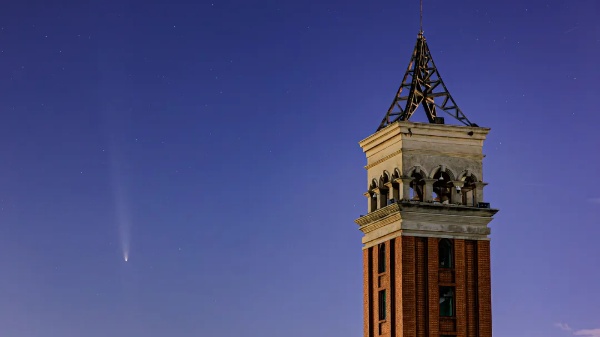Capturing celestial wonder: Tsuchinshan–ATLAS Comet at YNU
The Tsuchinshan–ATLAS Comet (C/2023 A3) – which follows an orbit cycle of approximately 61,751 years – reached its optimal period for observation and photography on Earth in the month of October.
Students and faculty members of Yunnan University, or YNU – located in Kunming, capital of Southwest China's Yunnan province – grabbed their cameras and smartphones to capture the stunning sight of the comet from elevated spots around the campus.

Students and faculty gather on the university's lawns, waiting for the comet's appearance. [WeChat account of Yunnan University]
Comets are small celestial bodies that traverse the solar system, composed primarily of ice and dust.
When distant from the sun, they resemble snowballs rolling through space. However, as they approach the sun, solar winds cause them to shed their surface, forming a bright coma and tail, creating the romantic starry trail associated with them.
A so-called great comet refers to those that shine so brightly they can be seen clearly with the naked eye. The Tsuchinshan–ATLAS Comet is one such rare sight, and those in areas with minimal light pollution have the chance to witness its celestial elegance firsthand.

A thrilling photo of the university's Mingyuan building and the comet is captured. [WeChat account of Yunnan University]
As the sky deepened to a rich navy, an unusual light appeared on the horizon – marking the arrival of the Tsuchinshan–ATLAS comet.
By late October, the comet will drift farther from the sun, making it increasingly difficult to photograph with ordinary equipment.

A student snaps a photo of the comet. [WeChat account of Yunnan University]
All rights reserved. Presented by China Daily. 滇ICP备12004993号-2








